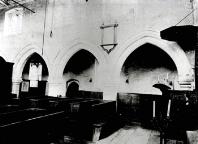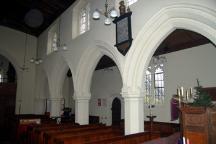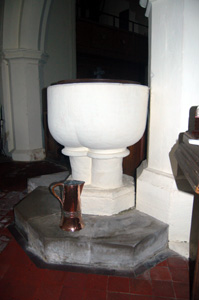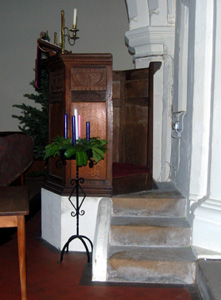Stanbridge Church Architecture

Stanbridge church from the south March 2008
Stanbridge was a chapelry of Leighton Buzzard and did not become a separate parish until 1735. Even then, the parish was only a curacy, not having a fully fledged vicar until 1866. The church is built on Stanbridge Green, opposite the supposed centre of population during the Middle Ages, which lay on the north side of Tilsworth Road.

Stanbridge church from the south about 1890 [Z50/108/16]
In a catalogue of Letters Apostolic in favour of Dunstable Priory, dated somewhere between 1198 and 1216 the parson of Stanbridge is mentioned [Bedfordshire Historic Records Society Volume X Dunstable Cartulary] though only the fact that there was a case against him, the nature of the case is not mentioned and the original case papers are lost. The reference is a little puzzling as at this date Stanbridge was only a chapel of ease and would not have had a parson, in the sense of a priest in charge of an independent parish church, just a chaplain.

Looking into the chancel from the nave about 1890 [Z50/108/19]
In his Leighton Buzzard and its Hamlets of 1928, Robert Richmond quotes the Ordination of Thomas de Kyrlington to the Vicarage of Leighton Buzzard in 1277 [the original document is in the Lincoln Diocesan archive] in which he had to provide a priest to serve the chapel of ease at Stanbridge.

View into the chancel from the nave December 2008
The oldest part of the present church at Stanbridge, the chancel, is the one surviving part of the building which Kyrlington's priest would have known. The north and south arcades, and thus, presumably the aisles behind them, are a little later, dating to about 1300 and 1330 respectively.


North arcade and aisle about 1890 and in December 2008
The west tower and and clerestory date from the 15th century and it was at this date that Perpendicular tracery was inserted into all the church windows. The font dates to about 1300. The pulpit dates to about 1600.

 The font and the pulpit December 2008
The font and the pulpit December 2008